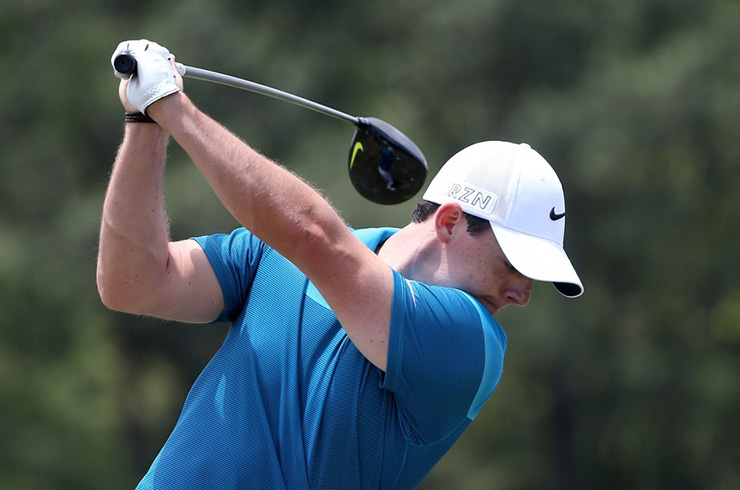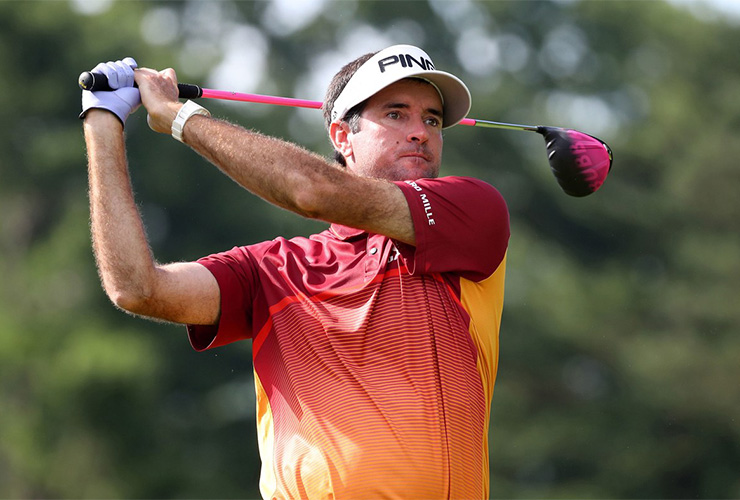By Shane Ryan
In the midst of Kevin Na’s win last weekend at the Shriners Hospitals for Children Open in Las Vegas, the PGA Tour’s stat gurus unearthed two fascinating gems: Na had set the ShotLink era record for strokes gained/putting in a single tournament (14.176) and also set the record for the most total feet of putts made in a tournament (558 feet, 11 inches). Anyone who watched Na’s victory understood that his putter was unreasonably hot—the man-made all five putts he faced from outside 25 feet—but those statistics, which date back to 2003 when ShotLink made its first appearance on the PGA Tour, quantify exactly how hot. We can only compare his performance to the modern era, but within that, it was a historic, superlative showing on the greens.
Which got me wondering: What are some other records for single tournaments in the ShotLink era and before? We can find yearly leaders without much trouble on the PGA Tour’s website, and those are a terrific way to look at single seasons or even careers. Those of us with access to tournament stats also can dig through player performances in specific events and even drill down to specific days. But it’s much harder—impossible for the layman, actually—to compare tournament to tournament and see who had the best week ever, at least in terms of specific skills like putting and driving. That’s what made the Na stats so fascinating; most of us would have had no idea that he just had one of the all-time putting weeks, and if we suspected it, we’d have no way to objectively quantify that instinct. But the stat gurus showed the way.
And it’s one of those gurus, the PGA Tour’s Luis Rivera, who I have to thank for all that comes next. (It’s not the first time he’s helped me, either). I came up with seven categories and asked if he could tell me the best performance in each one, within a single tournament, and before long I had my answers. You can find those stats below, along with some quick commentary for each.
1. The greatest single-tournament bomber
This honour goes to Bubba Watson at the 2015 WGC-Bridgestone Invitational and Robert Garrigus at the 2010 Reno-Tahoe Open, both of whom averaged 362.1 yards off the tee. Watson finished second, two shots behind Shane Lowry, while Garrigus finished in a tie for 10th. (This stat dates back to 1980.)
2. Most strokes gained/off the tee
This is a similar look to the stat above, though a bit more comprehensive in that it doesn’t just measure length, but also the value of the drive. This honour goes to Rory McIlroy at the 2015 Wells Fargo Championship. He gained 10.683 strokes off the tee that week, the best since 2004, and it won’t surprise you to remember that he won that tournament by six strokes. (Funny enough, I also judged that Rory had the best round ever of the ShotLink era at the same course in 2010.)

Streeter Lecka
3. Best proximity-to-the-hole average
Who had the best approach game? That honour goes to Jay Williamson at the 2003 Colonial, where his average approach landed a mere 20 feet, 7 inches from the hole. Unfortunately for Williamson, who made two playoffs on the PGA Tour but never won an event, the rest of his game wasn’t quite as excellent that week, and he had to settle for a T-28 finish. (Stats here go back to 2003.)
4. Most strokes gained/approach
Again, drilling a deeper than mere distance, who gained the most strokes on the rest of the field with his approach shots in one week? That would be Woody Austin, who gained an unbelievable 3.820 strokes per round just on approach shots at the 2007 St. Jude. He won that event by five shots, and in these first four examples, you can see just how strong strokes gained is as a statistic—while mere driving distance or hole proximity couldn’t predict a tournament winner, strokes gained/off the tee and strokes gained/approach correlated to two champs in McIlroy and Austin.
5. Most strokes gained/around the green
Who exhibited the greatest touch from in close for a whole tournament? The genius in question this time is Fred Couples, at the 2004 Memorial, where he accumulated 2.805 strokes gained per round. That was good enough for a score of 14 under par, but unlike McIlroy and Austin, he didn’t win—he finished second to Ernie Els. (Like all the SG stats, this one goes back to 2004.)

Al Messerschmidt
6. Highest one-putt percentage
Time to get a little obscure! We’ve got a tie on our hands for this one, David Frost (2005 at Hilton Head) and Bob Heintz (2002 at Greensboro) who both finished an astounding 68.06 per cent of their holes with a one-putt. This stat, of course, relies a little on luck in the sense that someone who misses the green with an approach but chips to two inches will get a “one-putt,” while someone who makes the same score on the hole but hits their approach onto the green 40 feet away will not. As such, it doesn’t correlate quite as well to winning. Frost finished T-38, and Heintz was T-30. (This stat goes back to 1992.)
7. Most sand saves
Last, and possibly least, we have sand saves. Three players have managed to go 14-for-14 in this category since 1980, and they are: Jim Carter in Phoenix, 1989, Luke Donald at the 2015 WGC-Cadillac Championship, and Aaron Baddeley earlier this year at the Arnold Palmer Invitational. This stat, while impressive, also indicates that the players may have been in the sand a bit too often for their own good: Jim Carter did the best in ‘89 with a T-7 finish, but Donald finished T-49 in a limited field, and Baddeley was T-17 earlier this year at the API.

David Cannon
Statistics in golf get better every year, and while the average stat nerd fan can’t yet look up tournament versus tournament statistics, the comparisons are available. As we saw with Na last weekend, and with the men above in the last few decades, it separates the merely great weeks from the ones that deserve to go down in history.









